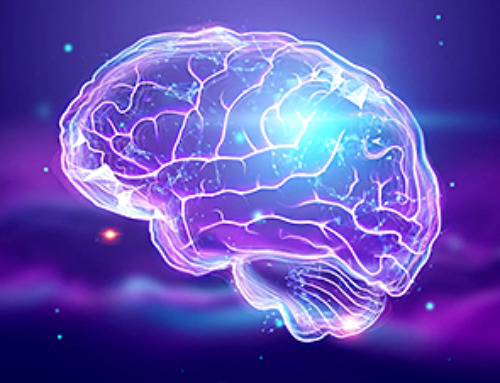Nanotechnology represents the future of personalised medicine, especially in treating diseases like cancer, says a top Swiss researcher in the field. What can the technology do, and how close does it come to science fiction scenarios?
For some, the term “nano” conjures strange scenarios out of science fiction. But nanoscience simply refers to a technique for manipulating particles on a “nano” scale, such as molecular. Rather than scaring us, the technology should give us hope, argues Cornelia PalivanExternal link, Professor of Physical Chemistry at the University of Basel and a member of the Swiss Institute of Nanotechnology.
SWI swissinfo.ch: Do you think the scenario presented in this science fiction story is likely, and that nanotechnology injected into the human body could somehow take over and manipulate a person?
Cornelia Palivan: I would say not. We are very, very far from that scenario. So-called “nanobots” are science fiction for the moment – something fascinating, but remaining surreal. One might reflect, at most, on the danger of engineering nanoparticles containing toxic compounds, or of potentially lethal chemical and biological weapons being developed by governments, but we are talking about poisons here and that has nothing to do with size. The label “nano” does not define a technology as good or bad, but instead identifies a way of solving problems at a molecular level. This can be extremely useful, especially in medicine.
SWI: How so? What does it mean to develop nanotechnology today?
C.P.: My research group and I are working on the implementation of nanotechnology in various fields, from medicine to ecology and food science. We are doing this through the development of so-called “bio-hybrid materials”, obtained by combining biomolecules – such as proteins and enzymes – with synthetic materials in very small quantities. We are talking about nano-scale compartments (very small capsules) that do not exceed 100 nanometres in radius and within which we encapsulate, for example, enzymes that will act when these compartments are absorbed by the body.
One of the problems in medicine is that the biomolecules contained in drugs quickly lose their effectiveness. With bio-hybrid materials as our nanocompartments, it is possible to maintain the full functionality of proteins and enzymes and ensure that they carry out their activities. Moreover, thanks to these synthetic “nano capsules”, the biomolecules are protected and remain intact.
SWI: Is nano-medicine more effective than traditional drugs?
C.P.: Yes, but it’s not just a question of efficacy. In medicine, the biggest challenge today is to also make drugs safer, by reducing side effects. Anyone can go to the pharmacy and buy different coloured pills to treat different diseases. But the question is: what’s in them? The idea is that the doctor of the future will not only prescribe medicine to his or her patients but will also make sure that the medicine works in the right place and is not toxic to other parts of the body. This is what everyone expects when they go to the pharmacy. From this point of view, nanotechnology can help, because it allows these carriers to be “engineered”.
Working with nanotechnology means trying to copy nature to understand how a specific protein acts inside a cell and replace it where necessary if it is missing due to a disease. If we resort to the classic solution – the introduction of molecules in powder form, as is the case with most drugs – the risk is that in some situations the substances will not make it into the cells because they are too big to be absorbed.
A well-known example is vaccines based on messenger RNA technology [such as those developed against Covid-19]. Ribonucleic acid or RNA is embedded in nanoparticles that act as carriers named “vectors”. These vectors protect the molecule and transport it to where it is needed. Being chemically engineered, these nanoparticles are more likely to be accepted by cells.
SWI: Are there risks associated with nanotechnology, also given that it’s new?
C.P.: Of course. But it’s difficult to say what the risks are because it takes several years of tests and clinical results before we can assess them in their entirety. So it’s normal for people to ask questions. For example, in the case of the Covid-19 vaccines, we know that they work well and we know the short-term effects, but we don’t yet know the long-term effects because nobody has had time to study in-depth something that appeared a year and a half ago. So these long-term risks have to be addressed by science.
News
New Once-a-Week Shot Promises Life-Changing Relief for Parkinson’s Patients
A once-a-week shot from Australian scientists could spare people with Parkinson’s the grind of taking pills several times a day. The tiny, biodegradable gel sits under the skin and releases steady doses of two [...]
Weekly injectable drug offers hope for Parkinson’s patients
A new weekly injectable drug could transform the lives of more than eight million people living with Parkinson's disease, potentially replacing the need for multiple daily tablets. Scientists from the University of South Australia [...]
Most Plastic in the Ocean Is Invisible—And Deadly
Nanoplastics—particles smaller than a human hair—can pass through cell walls and enter the food web. New research suggest 27 million metric tons of nanoplastics are spread across just the top layer of the North [...]
Repurposed drugs could calm the immune system’s response to nanomedicine
An international study led by researchers at the University of Colorado Anschutz Medical Campus has identified a promising strategy to enhance the safety of nanomedicines, advanced therapies often used in cancer and vaccine treatments, [...]
Nano-Enhanced Hydrogel Strategies for Cartilage Repair
A recent article in Engineering describes the development of a protein-based nanocomposite hydrogel designed to deliver two therapeutic agents—dexamethasone (Dex) and kartogenin (KGN)—to support cartilage repair. The hydrogel is engineered to modulate immune responses and promote [...]
New Cancer Drug Blocks Tumors Without Debilitating Side Effects
A new drug targets RAS-PI3Kα pathways without harmful side effects. It was developed using high-performance computing and AI. A new cancer drug candidate, developed through a collaboration between Lawrence Livermore National Laboratory (LLNL), BridgeBio Oncology [...]
Scientists Are Pretty Close to Replicating the First Thing That Ever Lived
For 400 million years, a leading hypothesis claims, Earth was an “RNA World,” meaning that life must’ve first replicated from RNA before the arrival of proteins and DNA. Unfortunately, scientists have failed to find [...]
Why ‘Peniaphobia’ Is Exploding Among Young People (And Why We Should Be Concerned)
An insidious illness is taking hold among a growing proportion of young people. Little known to the general public, peniaphobia—the fear of becoming poor—is gaining ground among teens and young adults. Discover the causes [...]
Team finds flawed data in recent study relevant to coronavirus antiviral development
The COVID pandemic illustrated how urgently we need antiviral medications capable of treating coronavirus infections. To aid this effort, researchers quickly homed in on part of SARS-CoV-2's molecular structure known as the NiRAN domain—an [...]
Drug-Coated Neural Implants Reduce Immune Rejection
Summary: A new study shows that coating neural prosthetic implants with the anti-inflammatory drug dexamethasone helps reduce the body’s immune response and scar tissue formation. This strategy enhances the long-term performance and stability of electrodes [...]
Scientists discover cancer-fighting bacteria that ‘soak up’ forever chemicals in the body
A family of healthy bacteria may help 'soak up' toxic forever chemicals in the body, warding off their cancerous effects. Forever chemicals, also known as PFAS (per- and polyfluoroalkyl substances), are toxic chemicals that [...]
Johns Hopkins Researchers Uncover a New Way To Kill Cancer Cells
A new study reveals that blocking ribosomal RNA production rewires cancer cell behavior and could help treat genetically unstable tumors. Researchers at the Johns Hopkins Kimmel Cancer Center and the Department of Radiation Oncology and Molecular [...]
AI matches doctors in mapping lung tumors for radiation therapy
In radiation therapy, precision can save lives. Oncologists must carefully map the size and location of a tumor before delivering high-dose radiation to destroy cancer cells while sparing healthy tissue. But this process, called [...]
Scientists Finally “See” Key Protein That Controls Inflammation
Researchers used advanced microscopy to uncover important protein structures. For the first time, two important protein structures in the human body are being visualized, thanks in part to cutting-edge technology at the University of [...]
AI tool detects 9 types of dementia from a single brain scan
Mayo Clinic researchers have developed a new artificial intelligence (AI) tool that helps clinicians identify brain activity patterns linked to nine types of dementia, including Alzheimer's disease, using a single, widely available scan—a transformative [...]
Is plastic packaging putting more than just food on your plate?
New research reveals that common food packaging and utensils can shed microscopic plastics into our food, prompting urgent calls for stricter testing and updated regulations to protect public health. Beyond microplastics: The analysis intentionally [...]






















